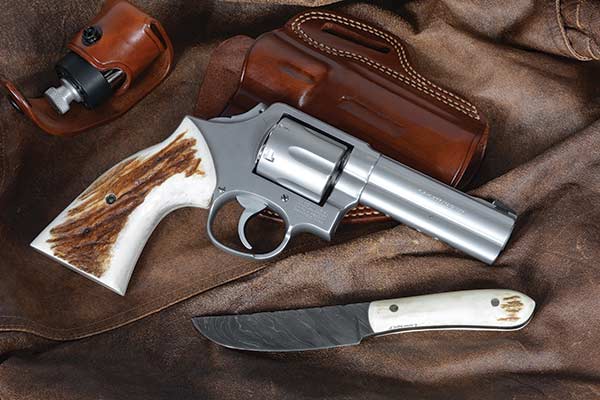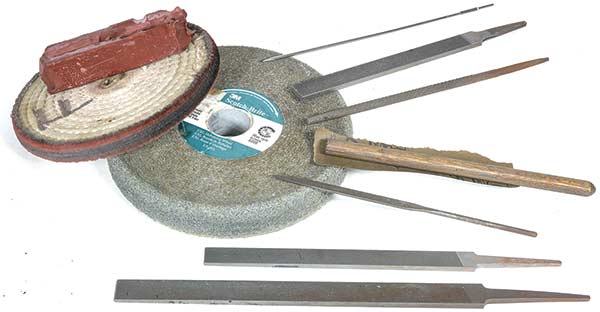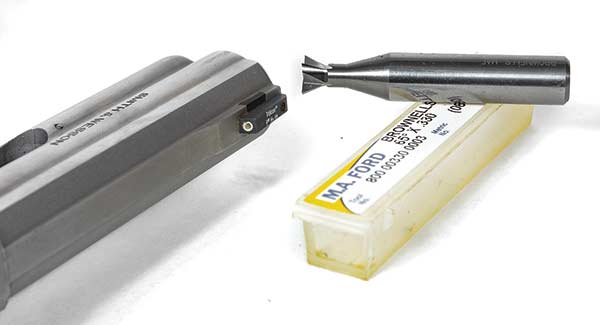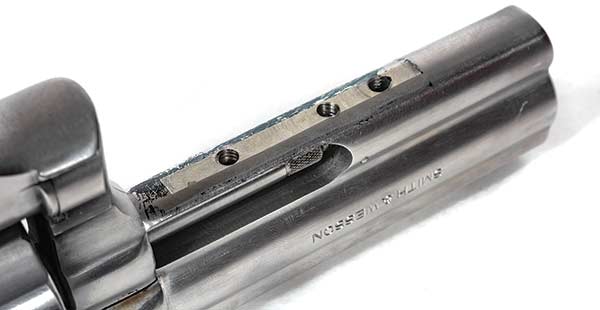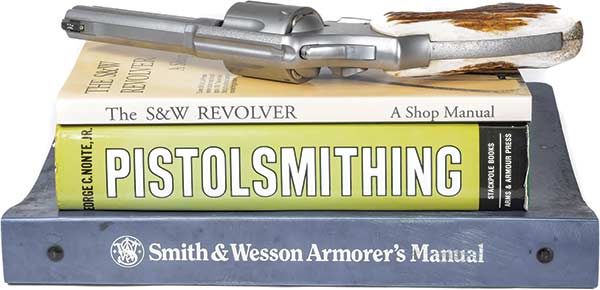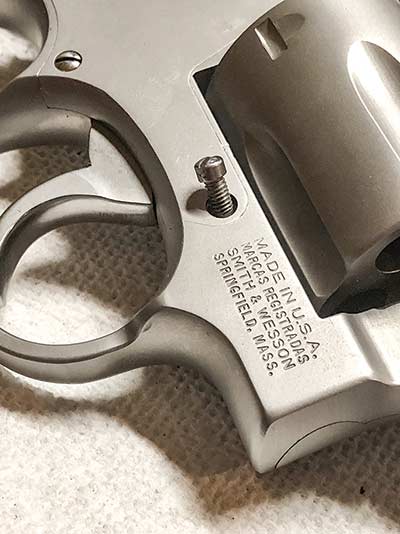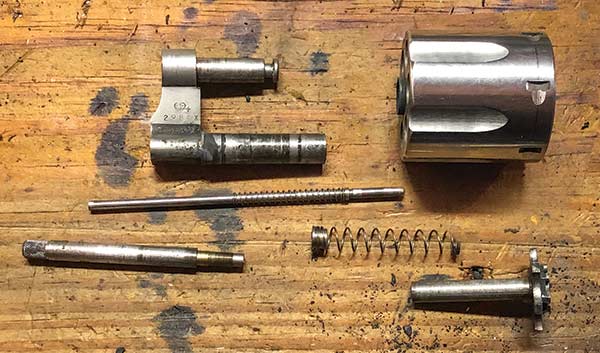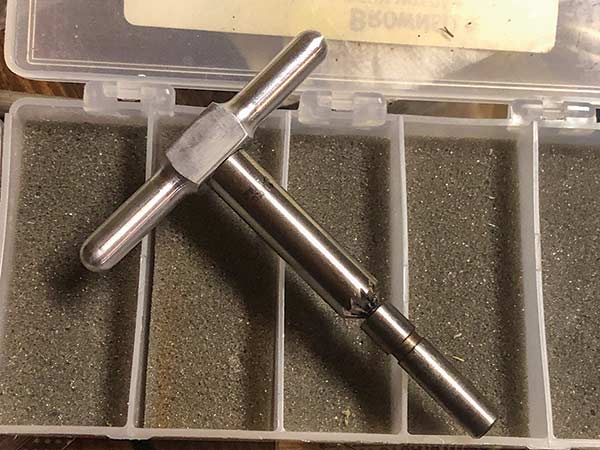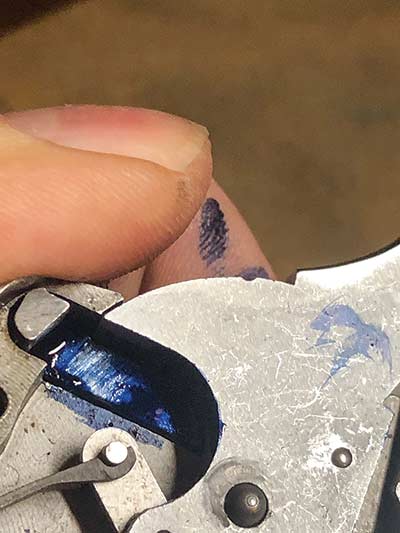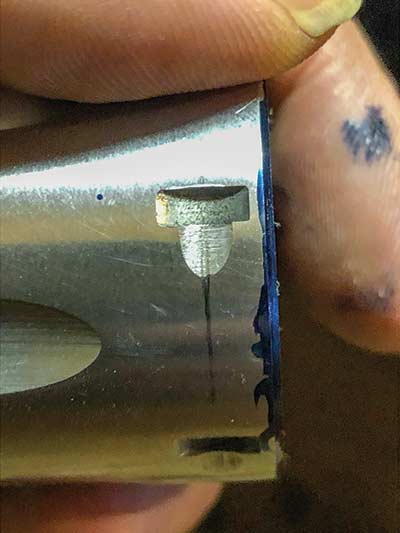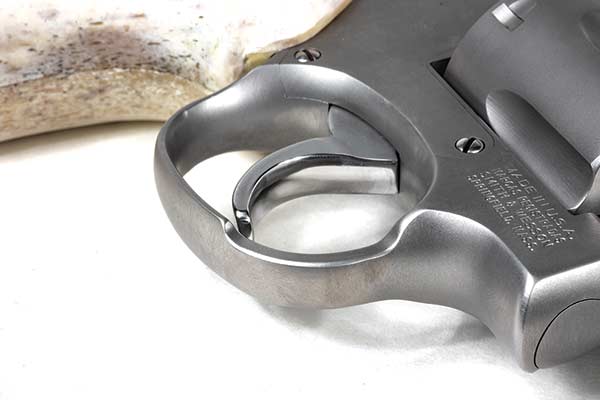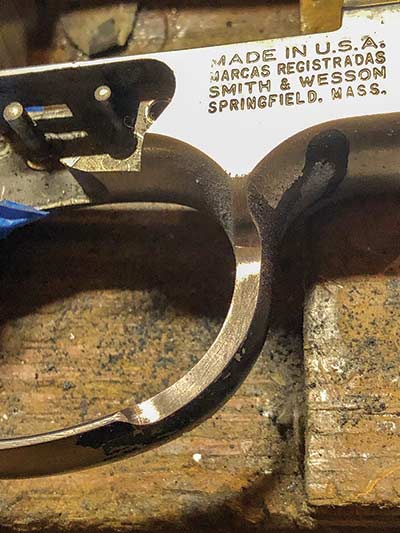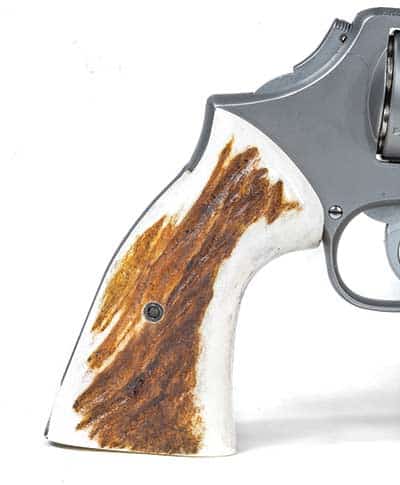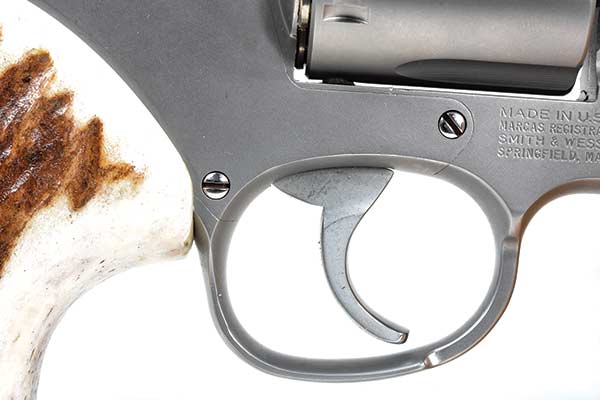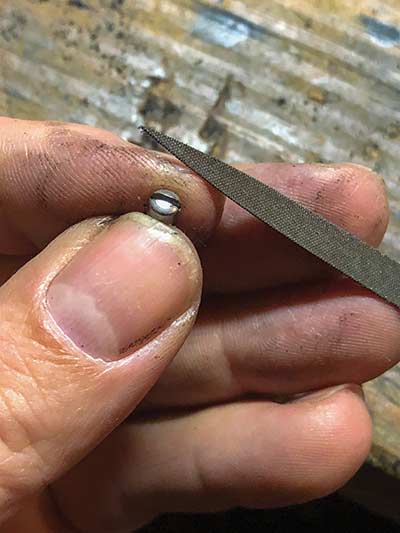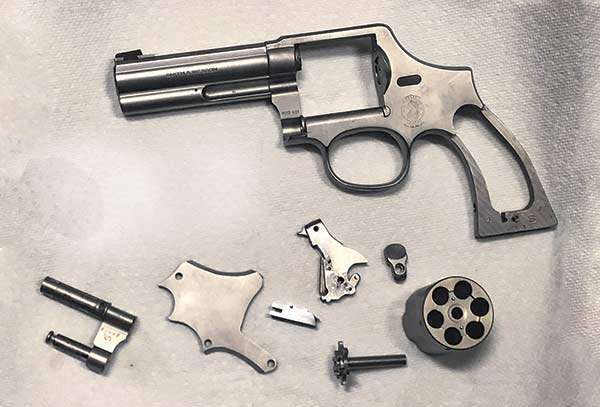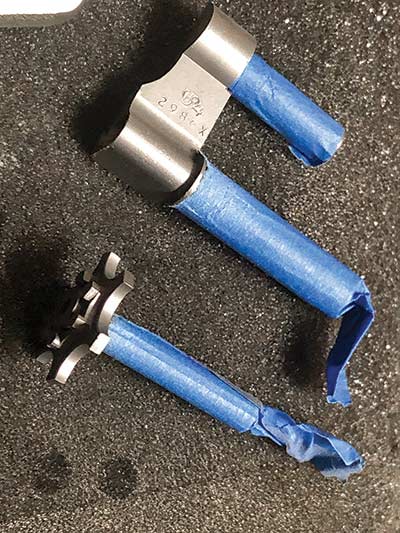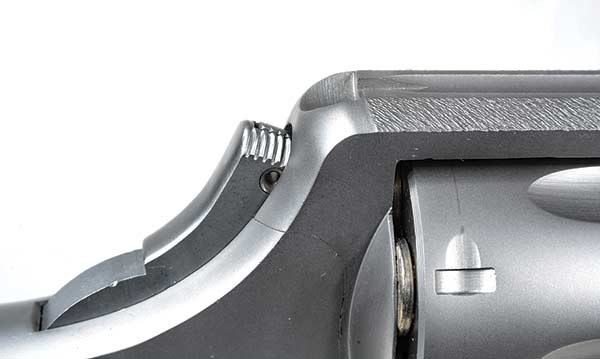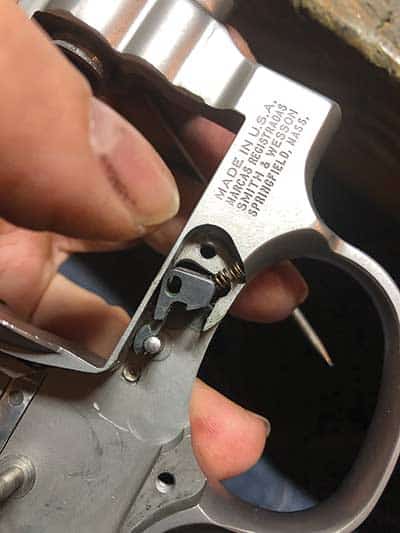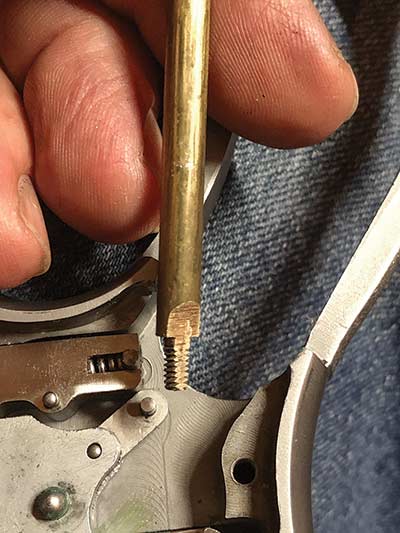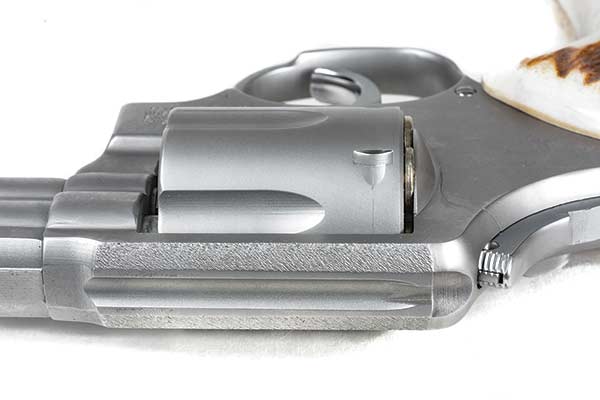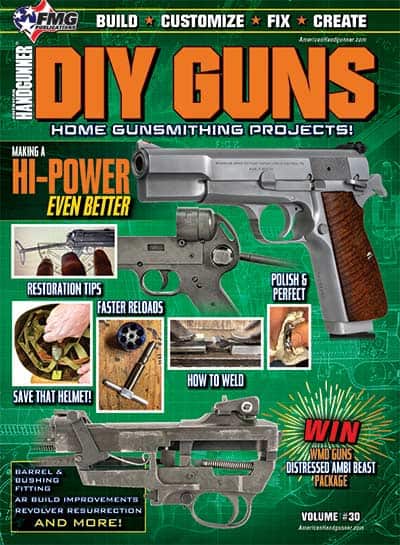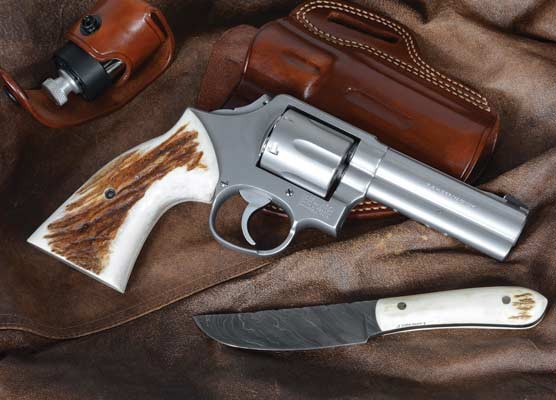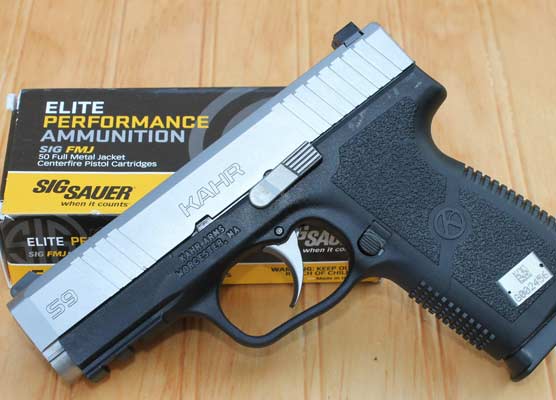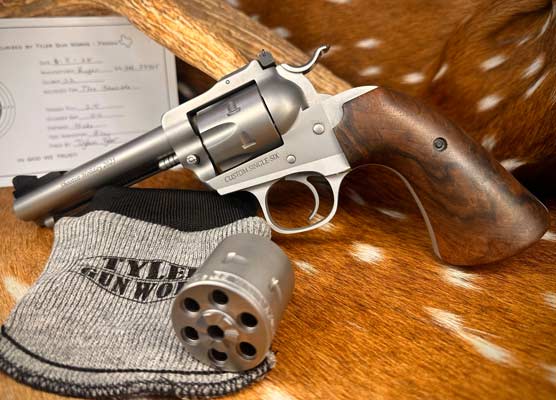What Goes Around
Building a Long-Neglected S&W 681 .357 Magnum
Never underestimate the S&W .357. For those of us who came of age in a world where gun shops were awash in police trade-in revolvers, they were inexpensive, dead reliable and shockingly accurate — not to mention the Magnum has lost none of its vaunted stopping power in the near-90 years since its introduction. The 686, also known as the Distinguished Combat Magnum, is one of the greats, a fully underlugged stainless sixgun built on the L-Frame to give shooters an option between the heavy .44-sized N-Frame and the K-Frame that can be downright unpleasant to shoot
with Magnums.
Lesser-Known Sibling
Lesser known is the 681, a fixed-sight version introduced in 1981 and only made for about a decade. Unlike the adjustable-sighted 686, the 681 only came with a 4″ barrel, typically without a target trigger or hammer. While its specifications make it clear it’s a defensive gun, there are ways to make it fill this role even better.
I first met this one around 15 years ago at Adventure Outdoors, probably the best-stocked gun store in Atlanta, and picked it up for a cool $150 or so, which was about right for the time. Even then, I had opinions about what a working revolver should look like, and they didn’t include a spur hammer or silver-colored front sight that disappears in the light.
Working-Revolver Mods
I took a Dremel cutoff wheel to the hammer and then deposited the remains of the spur in the little Altoids tin holding the other spurs I’ve cut off revolver hammers. Next, I clamped the gun in a milling machine to remove the front sight and cut a front dovetail for a Novak night sight. Since it has a top rib, that part was easy: Measure the factory sight to get the correct height and narrow the sight’s dovetail base to the width of the rib. The Pachmayrs that came on the gun went away, replaced with a pair of lasergrips from Crimson Trace. It went into the Ransom Rest, where it averaged in the mid-1″ range at 25 yards. Like I said, never underestimate them.
For a brief flashing moment, revolvers with lights were supposed to be the hot thing for shield drivers on SWAT teams since the gun could be held closely against the shield without the risk of a slide hitting it and causing the gun to malfunction. Persuaded by the reasoning, I duly machined matching flats on a length of rail and the bottom of the barrel underlug and drilled and tapped the holes to screw it in place. My initial urge to modify having been satisfied thus, the gun stayed, loaded, for a decade and a half
Mods, Part Deux
Having spent some quality time since then with a custom 65 and a particularly good 1917, I couldn’t take it anymore, and this year the files came back out. With the sights already addressed, my goal was primarily to make the gun handle better so I could use that inherent accuracy.
Cylinder Removal
We’ll take it from the outside in. Once the grips are off, the cylinder can be removed by unscrewing the forwardmost sideplate screw on the right side of the gun. The screw protrudes into a recess at the base of the cylinder crane, and once it’s out, the crane can be pulled forward to remove the cylinder. Since the cylinder slides on and off the crane freely, you’ll want to hang on to it when you pull it out. Once removed from the crane, the cylinder’s reverse-threaded ejector rod can be unscrewed from the ejector star by clamping it in a padded vise and turning the cylinder clockwise. Keep track of the springs involved: There are two inside.
Carry Melting
Taking off sharp edges is Carry Gun 101, so I used a file to bevel the front of the cylinder. Unlike the factory bevels on the front of the frame, which appear to have been gnawed in place by a particularly methodical gerbil, such things should look like the gun grew that way. So after filing, I softened the lines of the new bevels with a Scotchbrite wheel. For those who choke at the $60 or so for the 3M wheel, sandpaper backed by a file will remove the fine striations left by the file, but the Scotchbrite does leave an excellent finish. I also took the sharp corners off the front of the barrel, the cylinder latch, the frame and anywhere else I could find them.
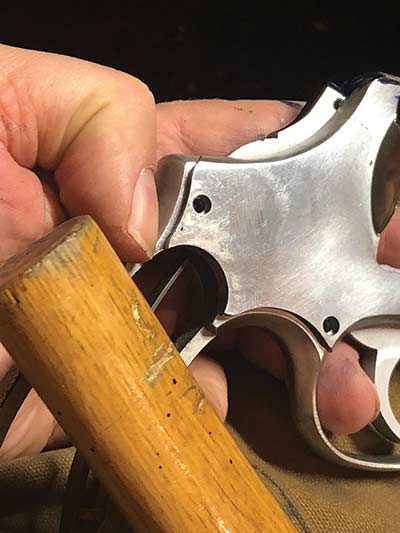
To remove the sideplate, take the screws out and tap the frame with a
wooden handle. The sideplate will slowly move upward from the frame.
Do not pry the sideplate: There’s a mounting tab on the upper right corner
that is not visible with the plate installed and is often damaged by careless disassembly.
Chamfering
Chamfering the charge holes in the cylinder is an excellent way to speed reloads. Over-chamfering the ejector star is a great way to have failures to eject. With this in mind, I very gently broke the corners on the ejector star using a chamfering tool from Brownells and removed the star before cutting a deeper bevel on each chamber. To track how much I was cutting, I applied Dykem marking fluid to the chamber mouths before cutting.
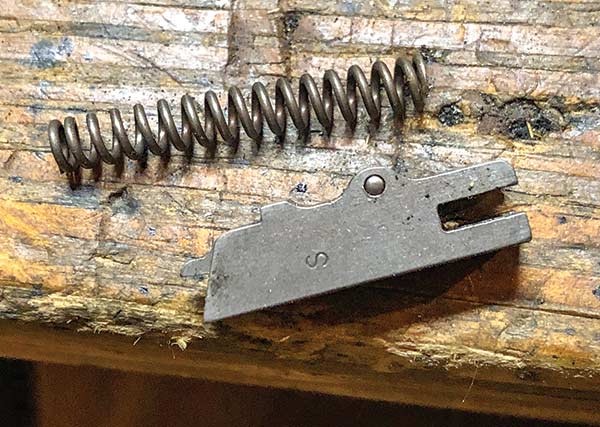
The rebound slide and its spring can benefit from very light polishing to
help them slide more smoothly. Jeremy lightly dressed the sharp corners
with a file, then used fine sandpaper back with a file to smooth the sides
and bottom and rolled it up to polish the inside where the spring rides.
The spring took a trip to the buffing wheel so it would slide smoothly in its hole.
Internals
Now it’s time to get inside. After removing the remaining two sideplate screws, tap the frame with the wooden handle — not the head — of a mallet or handle. After a couple of whacks, the sideplate will start to lift off the frame. Do not pry the sideplate. It has a tab at the upper right that fits into the frame, and it is really easy to bugger it up. With the sideplate off, you enter the world where angels fear to tread.
Every gun benefits from having a good trigger. The long double-action pull of revolvers can make them particularly hard to shoot, making it even more important on a sixgun. Unfortunately, there are significant risks in attempting revolver action work. Reducing spring tension by cutting coils off springs or backing off the strain screw that compresses the mainspring can result in light firing pin hits. The hammer and trigger in Smith revolvers are case-hardened, which hardens the surface only, and if you stone those parts as you would on a 1911 trigger job, you can cut through to the softer metal beneath and get a trigger pull that quickly becomes unsafe. Not to mention, parts interactions and timing in a revolver are very complex, and you can easily damage things beyond repair. All I did inside the mechanism was minor work that reduced friction to make the pull somewhat smoother. If you want a revolver trigger job, take it to a professional.
Cooling Hot Spots
The first hot spot I found was the inside of the cylinder release. By applying Dykem and cycling the action several times, I found inconsistent rub marks that showed where the hammer was rubbing on the rough surface inside the latch. Using increasingly finer sandpaper (I stopped with 2,000 grit) backed by a file, followed by a brief trip to the buffing wheel, I was able to remove the roughness. Similarly, I broke the sharp corners of the rebound slide with a fine file and used backed sandpaper to polish the sides and spring channel inside of the slide, then polished the spring itself against the buffing wheel. On both parts, rather than going for the sort of flawless mirror finish you’d want on the outside of the gun, which would have required removal of enough material to change the parts’ dimensions, I focused on having a smooth bearing surface.
I also lightly polished the recess leading into each notch on the cylinder and the cylinder stop. The face of the trigger, however, got the complete polish treatment, helping it slide more easily across the trigger finger, and I took the sharp corners off the bottom as well.
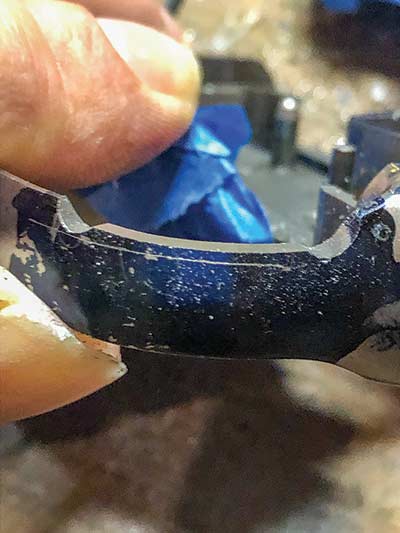
An old-school gunfighter's trick is narrowing trigger guards to get faster
access to the trigger. It can be done several different ways, but Nonte’s
Pistolsmithing suggests using a round file to cut both ends of the recess
and then removing the material between them. Jeremy marked the area to
be cut by measuring the amount to be removed with a dial caliper and then
scribing that dimension through a coat of Dykem.
Trigger Guard Profiling
Cutting off trigger guards is an old-school gunfighter modification that goes back to the Old West and has been done on single actions, 1911s and DA revolvers like the famous Fitz Specials. It’s also incredibly dangerous, and there’s a risk an impact can bend the remaining stem of the guard behind the trigger, locking the gun completely. However, narrowing the guard, either on both or one side, is a safer way to give slightly faster access to the trigger. It appears on ASP and Devel autopistols and in the writing of many of the famous sixgunners. While I’ve done it on other guns with either a Dremel or a milling machine, on the 681, I followed the instructions in Nonte’s Pistolsmithing book. After applying Dykem and using a dial caliper to scribe the line I wanted to cut to, I used a round file (think a coarse version of a chainsaw file) to cut a deep scallop at either end of the cut and removed the material between them with a sharp Swiss pillar file. Once done, I smoothed the new flat with sandpaper, wrapping it around an oak dowel to cut into the curved ends of the new flat and beveled the sharp corners I’d just created.
Hammer Spur Work
I had already removed the hammer spur to make the gun more snag-free and eliminate the dangerous temptation to cock it in a defensive situation. There are times on the range, however, when it’s helpful to be able to shoot single action, so I decided to add serrations across the top to make it a little easier to cock the remaining stub. Even a sharp file skitters right off the unyielding case-hardening, so it was very difficult to make headway with the 25 LPI checkering file I used to lay out the lines. Since the teeth barely scratched the surface, it was difficult to create a cut so I could index the next set of lines. When checkering, you normally make a pass, then another, getting the lines deeper and then “step” the file teeth over a row or two to start the next lines. Instead, once I had something approaching a groove cut, I used a coarser triangle file to cut through the case-hardening and bring the serrations to depth, going back over them with the checkering file to get a consistent depth. Neither side is flawless, and one is better than the other, but it did create enough texture to make cocking the hammer possible but still not tempting.
Final Steps
I matted the backstrap for texture and the top of the receiver for purely cosmetic purposes. A hand-applied texturing process, matting is frequently seen on Armand Swenson’s custom 1911s. Swenson taught the technique to Wayne Novak — whose 1911s and Hi-Powers it frequently appears on — who taught me.
Once all the hand work was done, I chose to bead blast the gun to get an even satin finish and shipped the frame and sideplate to Tyler Gun Works for grip fitting. I thought they’d be a good fit when I saw Tyler’s new stag grips on an N-Frame during a recent trip to Gunsite. They provide a classic touch on a sixgun with a bit of gunfighter flair; the “bark” on antler grips gives added purchase over smooth grips without the abrasion of sharp checkering, which can be painful in recoil or when worn closely against the skin.

